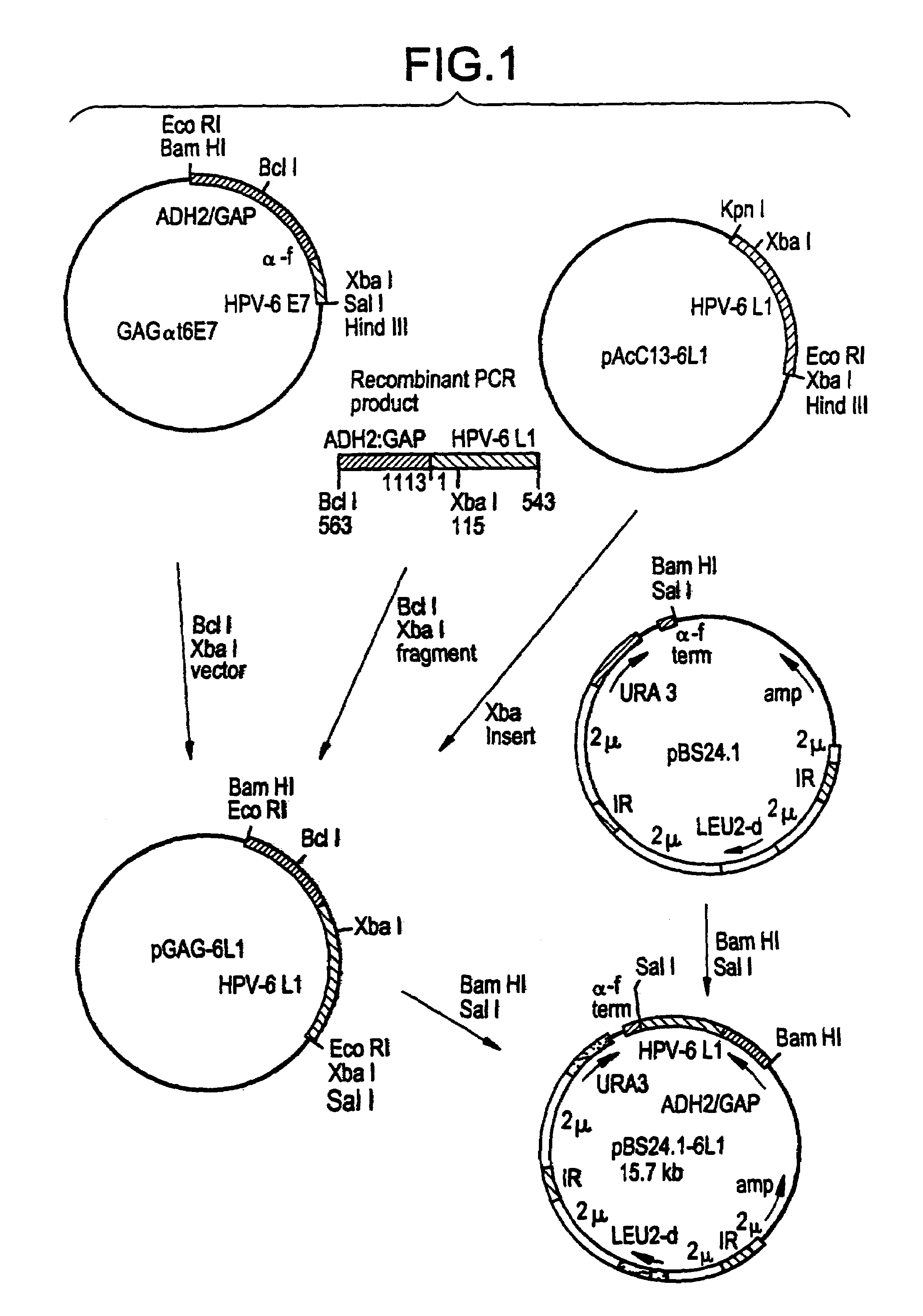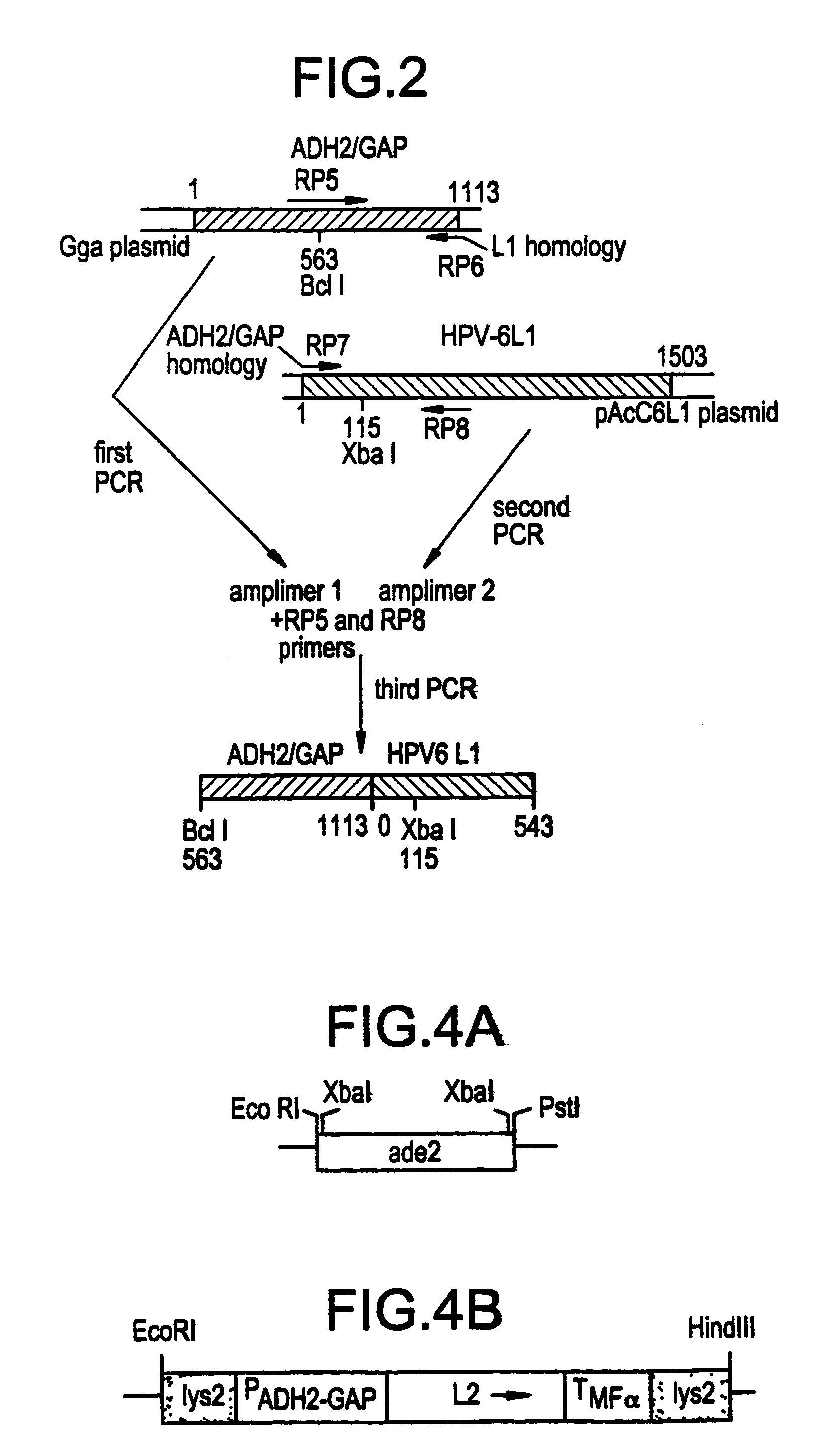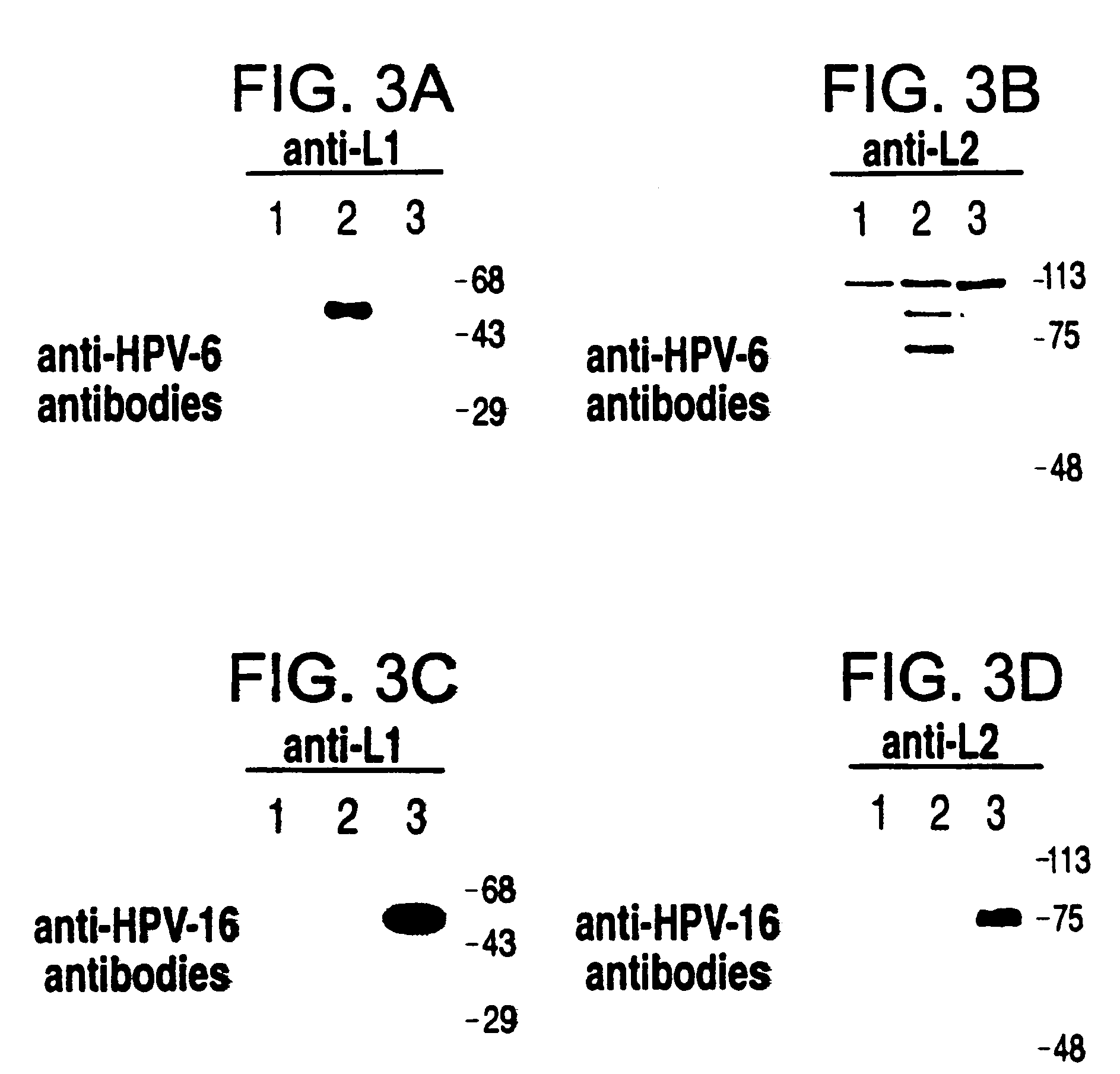Method for producing yeast expressed HPV types 6 and 16 capsid proteins
a technology of hpv and type 6 is applied in the field of producing yeast expressed hpv types 6 and 16 capsid proteins, which can solve the problems of hampered approach and inability to evaluate the efficacy of vlp-based anti-hpv vaccine candidates in animals
- Summary
- Abstract
- Description
- Claims
- Application Information
AI Technical Summary
Benefits of technology
Problems solved by technology
Method used
Image
Examples
example 1
HPV Type-Specific Detection of Capsid Proteins Expressed in Yeast.
[0032]A single yeast strain which could express the four HPV-6 and HPV-16 L1 and L2 capsid proteins was prepared. A necessary tool in achieving this was the availability of antibodies which reacted specifically or preferentially with the L1 or the L2 protein of only one HPV The HPV-6 and HPV-16 L1 and L2 genes were cloned in the episomal vector pBS24.1 (see Example 2 below) and expressed in the S. cerevisiae strain JSC310 to test the type specificity of the available antibodies. FIG. 3 shows the results of a Western blot analysis of total cell extra prepared from the recombinant strains incubated with specific anti-HPV-6 (a) or HPV-16 (c) L1 Mabs and with HPV-6 (b) or HPV-16 (d) L2 antisera. In all cases HPV type-specific bands were detected, although a weak cross-reactivity could be seen for both the L2 antisera. While the HPV-6 and HPV-16 L1 Mabs identified proteins with the expected molecular weight of about 55 kil...
example 2
Construction of Recombinant Plasmids
[0033]DNA fragments encoding the HPV proteins were obtained from available recombinant plasmids, either by restriction enzyme digestion or by PCR amplification (Expand High Fidelity PCR System, Boehringer Mannheim), and they were completely sequenced using an Applied Biosystem (Norvalk, CELLTECH, USA) model 373 DNA sequencer.
[0034]The episomal yeast expression vector pBS24.1, a yeast “shuttle” vector (17 and Philip J. Barr, Chiron Corporation, Emeryville, Calif., USA), containing the leucine 2 (Leu2) and uracil 3 (Ura3) selectable genes was used. In this instance, it was obtained by digesting an available pBS24.1αt6E7 plasmid with Bam HI and Sal I. The pBS24.1αt6E7 plasmid was prepared for the yeast expression of the HPV-6E7 antigen in a secreted form.
[0035]The pBS-6L1 plasmid, expressing the HPV4 L1 protein under the control of the alcohol-dehydrogenase-2-glyceraldehyde-3-phosphate-dehydrogenase (ADH2 / GAP) glucose repressible promoter (J. Shuster...
example 3
Generation of Recombinant Yeast Strains
[0053]The strains JSC310-6L1epi (14), JSC310-16L1epi JSC310-6L2epi and JSC310-16L2epi expressing the four capsid proteins by means of episomal vectors, were obtained by transformation of the parental JSC310 strain with the expression plasmids pBS-6L1 (14), pBS-16L1, pBS-6L2 and pBS-16L2.
[0054]The JSC310-6L2int and the AB110-16L2int strains were obtained using the following experimental approach. Competent yeast cells were cotransformed with 5 μg of EcoRI-HindIII digested YIpLys-6L2 or YIpLys-16L2 integrative plasmid and 1 μg of pBS24.1 episomal vector to allow the selection of transformants. Different clones were tested for growth onto plates of minimal medium (MM) supplemented with α-adipate to select mutants with an inactivated Lys2 gene (49). Correct integration into the lys2 locus was verified by PCR analysis by using pairs of oligonucleotide primers complementary to sequences within the expression cassette and the genomic portion of the Ly...
PUM
| Property | Measurement | Unit |
|---|---|---|
| molecular weight | aaaaa | aaaaa |
| molecular weight | aaaaa | aaaaa |
| molecular weight | aaaaa | aaaaa |
Abstract
Description
Claims
Application Information
 Login to View More
Login to View More - R&D
- Intellectual Property
- Life Sciences
- Materials
- Tech Scout
- Unparalleled Data Quality
- Higher Quality Content
- 60% Fewer Hallucinations
Browse by: Latest US Patents, China's latest patents, Technical Efficacy Thesaurus, Application Domain, Technology Topic, Popular Technical Reports.
© 2025 PatSnap. All rights reserved.Legal|Privacy policy|Modern Slavery Act Transparency Statement|Sitemap|About US| Contact US: help@patsnap.com



